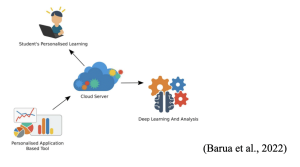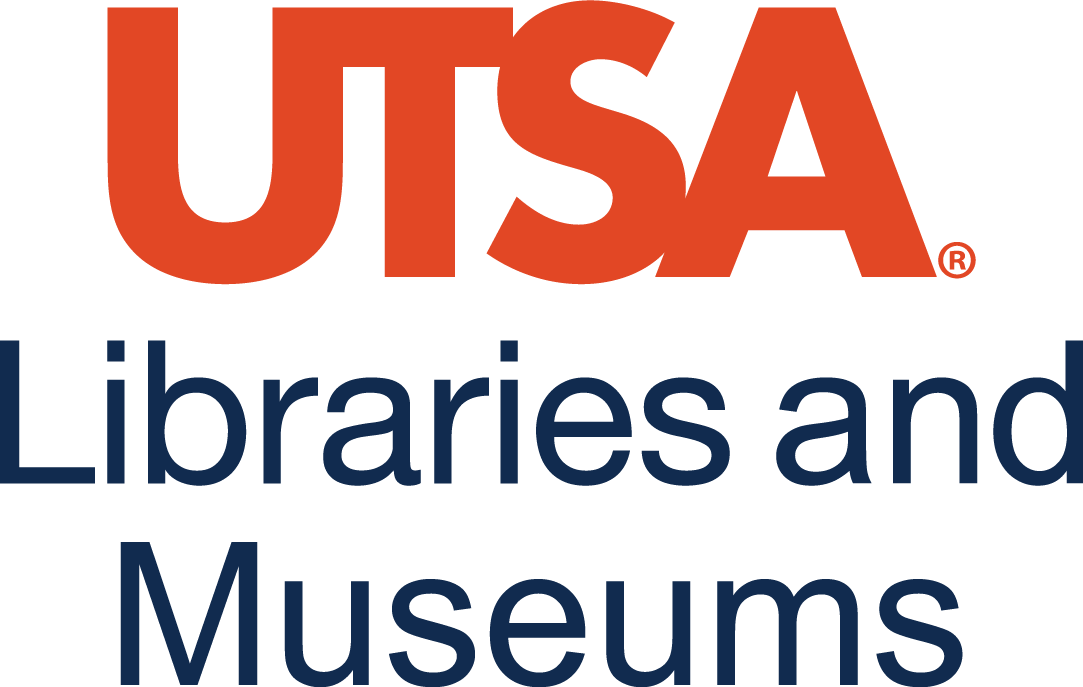Assistive Technology
1 Artificial Intelligence Enabled Personalized Assistive Tools to Enhance Education of Children with Neurodevelopmental Disorders | Review
Tamara Tupper
Article
Barua, P.D.; Vicnesh, J.; Gururajan, R.; Oh, S.L.; Palmer, E.; Azizan, M.M.; Kadri, N.A.; Acharya, U.R. Artificial Intelligence Enabled Personalized Assistive Tools to Enhance Education of Children with Neurodevelopmental Disorders—A Review. Int. J. Environ. Res. Public Health 2022, 19, 1192. https://doi.org/10.3390/ijerph19031192.
Authors

Prabal Datta Barua | Adjunct Faculty
University of Southern Queensland
Summary and Review
Summary
This article focuses on how personalized AI can enhance learning for learners who struggle with mental and learning disabilities. Mental Disorders (MDs) that could benefit from personalized AI for learning and development are:
- Neurodevelopmental Disorders (NDDs) o Specifically: intellectual disabilities and specific learning disabilities like dyslexia, and attention deficit disorder (ADHD).
- Autism Spectrum Disorders (ASD)
- Mental Health Disorder o Specifically: anxiety, depression, stress, and psychotic disorders.
Providing timely and efficient interventions is essential to achieve better results for children. The review summarizes the range and effectiveness of AI-enabled tools that use Machine Learning Models (MLMs) to address educational challenges in students with several NDDs. Effective use of tools for improving social interaction and supporting education can be achieved. Further work on developing and evaluating assistive technologies in children with different types of disabilities needs to be done. The studies that have been done to date demonstrate the positive impact of AI tools on student learning outcomes, with teachers, parents, specialized educators, and therapy practitioners able to use these tools in their educational or therapeutic practices. Artificial intelligence techniques have been reported to enhance the independence of user actions, allowing children with learning challenges to achieve their individual educational objectives. It is recommended that future AI tools be developed with a focus on providing personalized training for individuals with NDDs, based on the limitations of existing AI tools.
Research Method
The research was done between the years of 2011 to 2021. The research is based on Preferred Reporting Items for Systematic Reviews and Meta-Analyses (PRISMA). The PRISMA Guidelines and Criteria aim to improve the transparency and quality of Systematic Reviews and meta-analyses. It helps to make it easier for others to assess the research’s reliability by allowing researchers to report their findings clearly and consistently. The following charts best represent what information was gathered and the flow of how it was analyzed. (Barua et al., 2022)

Data Collected And Analyzed
Data collected was based on scholarly articles and types of AI tools used for addressing the learning disabilities of students with NDDs. The information was broken down into several sections specific to the needs of the students. The study included information about the types of NDDs studied: ADHD, Dyslexia, and ASD. Information collected:
- Definitions of Learning Disabilities, NDDs, that were studied: ADHD, Dyslexia, and ASD.
- Study the differences in neural adaptations between a “Normal” brain and a “Dyslexic” brain.
- Study the neuropathological differences between a “Normal” brain and a “Autistic” brain.
- Individual Educational Approaches to assist a child with ADHD. Individual Educational Approaches to assist a child with Dyslexia.
- Teacher Educational Support for students with ASD.
- Challenges of Implementing Individual Learning Approaches in the educational system.
- Using AI in Therapies and Supportive Education for students with mental disorders.
- Advancing Methods for using AI.
Studies were included if they met the following criteria:
- They describe the use of AI tools to help students with ADHD, Dyslexia, and/or ASD in their learning.
- They were published between the years of 2011 and 2021.
- They were published in a peer-reviewed journal.
- They were published in English.
They were excluded if:
- They described the use of AI tools to help students with other disorders apart from NDDs, ADHD, Dyslexia, and/or ASD.
Findings
Most AI tools used for learning have reported positive outcomes for NDDs, ADHD, Dyslexia, and ASD. Using robots and alternative communication also aids in improving attention, mathematics, and social skills effectively for teaching students with ASD. These findings confirm the efficiency of artificial intelligence tools in personalized education.
- Improve social skills via storytelling.
- Real-time assistive tool that tracks activities and helps students sustain attention.
- Helps to send constant reminders to students to refocus on their work.
- Replaces writing activity with speech to allow students to express themselves efficiently without tiring themselves.
- Helps students hear and process numbers easily for mathematics.
- Explores the use of machine learning methods to improve the effectiveness of the learning process.
- Helps students with reading and writing skills.
- Provides tailored interventions for difficulties encountered in literacy.
- Provides personalized game-based exercises to enhance specific cognitive skills linked to dyslexia.
- Converts natural language text to images to aid students in their learning.
- To teach students to recognize facial emotions.
- Encourages social interaction between user and peers/educators.
- Helps students to recognize and express feelings. Software games help recognize behavioral and emotional clues and enhance social skills.
Critique and Limitations
Ethical issues related to privacy, data protection, and informed consent should be addressed in view of the widespread use of assistive technologies for pupils who are adolescents. Compliance with the relevant regulations by educational technology companies is crucial. Respect for privacy and the secure use of student data used to train machine learning models are important to local ethics board requirements. To avoid data being compromised, safeguards must be in place before using an assistive tool, and educators should ensure that ethical considerations have been taken into account when collecting student data. Another limitation of using these instruments in classroom settings is the cost associated with their installation, maintenance, and repair. Schools need to incorporate artificial intelligence technology into cloud-based intranets so it can be accessible and easy to integrate. This would be more cost-efficient since schools will have to pay the subscription at a reasonable monthly price, covering all aspects like installation, storage space, specifications, maintenance, and technological support.
Impact and Reflections for the Field
By providing personalized support, improving accessibility, and enhancing the learning process, AI can offer many benefits to students with learning disabilities. Consideration should be given to the fact that while artificial intelligence may offer a valuable tool for supporting learners with learning disabilities, it is best used with other educational strategies and human guidance. In addition, the effectiveness of AI-based solutions can vary according to a student’s specific learning disability and individual needs. Institutions of higher education need to make sure their Artificial Intelligence solutions meet accessibility standards, and they should be working closely with disability services offices to address students’ particular needs. Artificial intelligence should be used to complement, not replace, human support and accommodation for students with disabilities in higher education. AI is widely used in corporate settings, helping organizations improve their effectiveness, decision-making, customer service, and more. As organizations seek to remain competitive and efficient in a rapidly evolving business environment, artificial intelligence is a flexible tool that can be adapted to different corporate needs. However, the implementation of AI must be conducted responsibly concerning ethics and privacy concerns while ensuring that employees are adequately trained and encouraged to take advantage of this technology effectively.
Implications for Practice
- Personalized Learning: AI-powered educational platforms can adapt to individual learners’ learning needs and styles. To meet the specific learning disabilities of students, they can monitor their strengths and weaknesses to provide tailored teaching and exercises.
- Speech recognition software: speech recognition software can help students with mobility impairments, enabling them to type and interact with computers to complete assignments and access course materials.
- Gamification and engagement: AI can be used to design educational games and interactive content that are especially useful for students with learning disabilities, enabling them to learn in a more enjoyable and motivating way.
- EBooks and Text Adaptations: to meet the needs of visually or reading impaired students, Artificial Intelligence can adapt electronic textbooks for various formats such as acoustic books, braille, and large print.
- Collaboration tools: By facilitating group work and interacting with classmates and instructors, AI-powered collaborative platforms can help students with communication difficulties.
- Human Resources: AI can help recruit by automatically screening resumes, conducting initial interviews, and predicting employee turnover. In the areas of training and employee development, it also helps to support human resources.
- Document management and processing: Artificial intelligence can automatically classify, retrieve information from, and manipulate documents to increase the efficiency of administration processes.
- Language translation and Localization: Translation tools using artificial intelligence help global companies communicate with customers and partners in various languages.
- Cybersecurity: By analyzing network traffic patterns and detecting anomalies that could indicate possible breaches, AI enables organizations to detect and respond to cyber threats.
Recommendations for Future Research
Developing a unique cloud-based model or an application that enables the ability to personalize and interact with learners will use deep learning techniques to be useful for teachers and other adults who help them learn. The personalized model would be developed based on sizeable data consisting of input parameters, e.g., facial expression images, speech indications, bioindicators, and clinical information that includes Age, Gender, Genealogical History, and so on. AI will provide advantages of the cloud system, and cost-effective maintenance and technical support will be provided. Simplifies the workload of educators. It processes information and resources with ease. Data analysis using intelligent automation provides real-time personalized recommendations. While there are risks, like anything new, precautions can be implemented to allow students with NDDs to learn and grow by utilizing AI technology.

